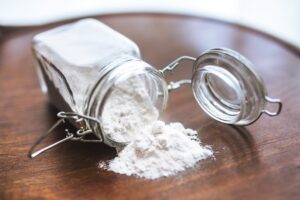One of the biggest differences between dry mix mortar and traditional mortar is the modification of dry mix mortar with a small amount of chemical additives. Adding one additive to dry mortar is called primary modification, and adding two or more additives is secondary modification. The quality of dry powder mortar depends on the correct choice of ingredients and the coordination of various ingredients. Because chemical additives are more expensive and have a greater impact on the performance of dry mortar. Therefore, when selecting additives, the amount of additives should be given top priority. The following is a brief introduction to the selection method of chemical additive cellulose ether.
Cellulose ether, also known as rheology modifier, is an admixture used to adjust the rheological properties of fresh mortar and is used in almost every type of mortar. The following properties should be considered when selecting its variety and addition amount:
(1) Water retention at different temperatures;
(2) Thickening effect, viscosity;
(3) The relationship between consistency and temperature, and the influence on consistency in the presence of electrolyte;
(4) The form and extent of etherification;
(5) Improvement of thixotropy and positioning ability of mortar (this is necessary for mortar painted on vertical surfaces);
(6) Dissolution rate, conditions and completeness of dissolution.

In addition to adding cellulose ether (such as methyl cellulose ether) to dry powder mortar, polyvinyl acetate can also be added, that is, secondary modification. Inorganic binders (cement, gypsum) in mortar can ensure high compressive strength, but have little effect on tensile and flexural strength. Polyvinyl acetate establishes an elastic film in the cement stone pores, so that the mortar can withstand high deformation loads and improve wear resistance. Practice has proved that adding different amounts of methyl cellulose ether and polyvinyl acetate into dry mortar can prepare thin-layer smeared slab bonding mortar, plastering mortar, decorative plastering mortar, and masonry mortar for air-entrained concrete blocks And self-leveling mortar for pouring the floor, etc. Mixing the two can not only improve the quality of the mortar, but also greatly improve the construction efficiency.
In practical applications, in order to improve the comprehensive performance, a variety of admixtures are required to be used in combination. There is an optimal matching ratio between the additives. As long as the dosage range and ratio are appropriate, they can improve the performance of the mortar from different sides. However, when they are used alone, the modification effect of the mortar is limited, and sometimes even Negative effects, such as single-mixing cellulose, increase the cohesion of the mortar and reduce the degree of delamination, but at the same time, the water consumption of the mortar is greatly increased and the mortar is stored in the interior of the slurry, which leads to a greater decrease in the compressive strength; When the air-entraining agent is added, although the stratification of the mortar can be greatly reduced and the water consumption can also be greatly reduced, the compressive strength of the mortar tends to decrease due to more air bubbles. In order to maximize the performance of masonry mortar and avoid harm to other properties of the mortar, the consistency, stratification and strength of the masonry mortar can meet the engineering requirements and relevant technical specifications. It is necessary to take comprehensive measures, develop and use composite admixtures from the perspectives of water reduction, viscosity enhancement, water retention and thickening, and air-entraining plasticization for cement and environmental protection.